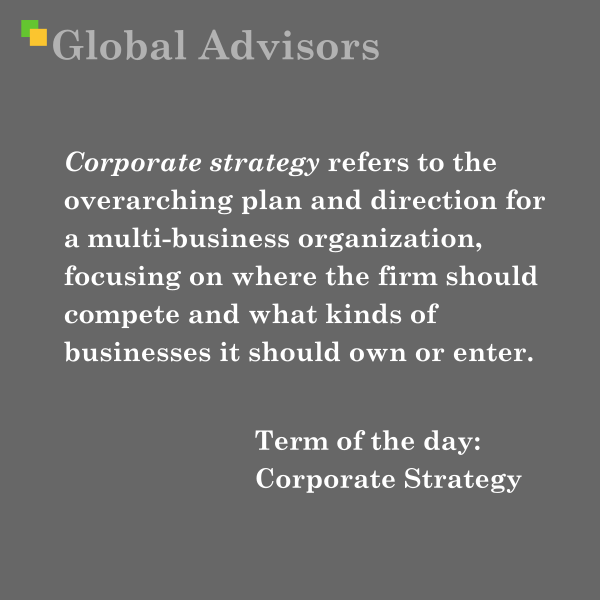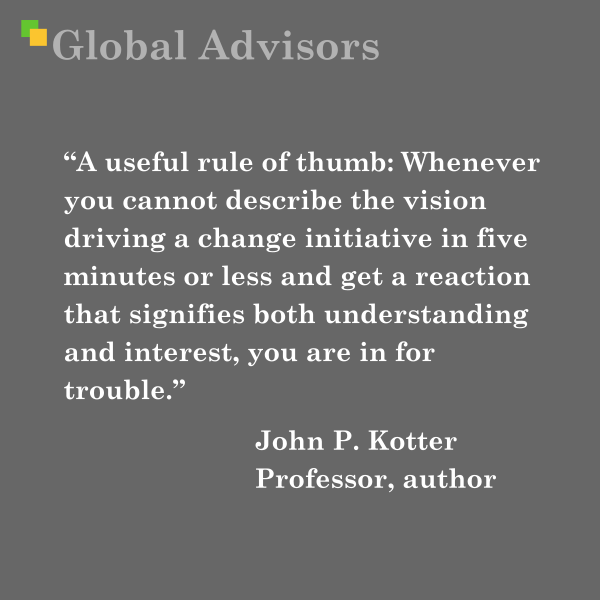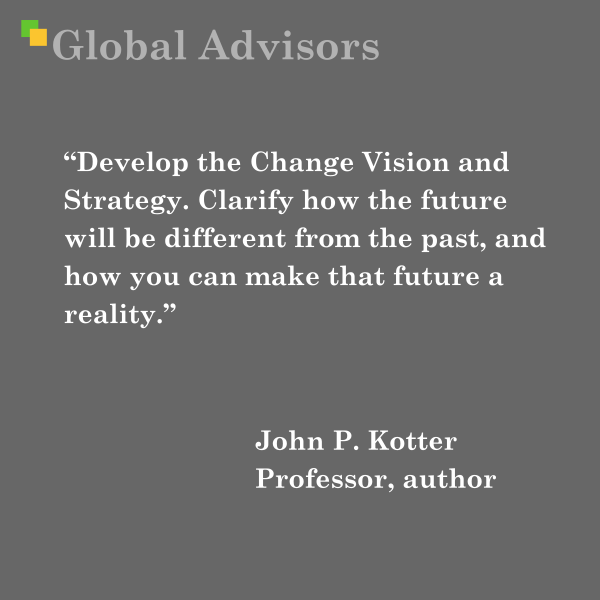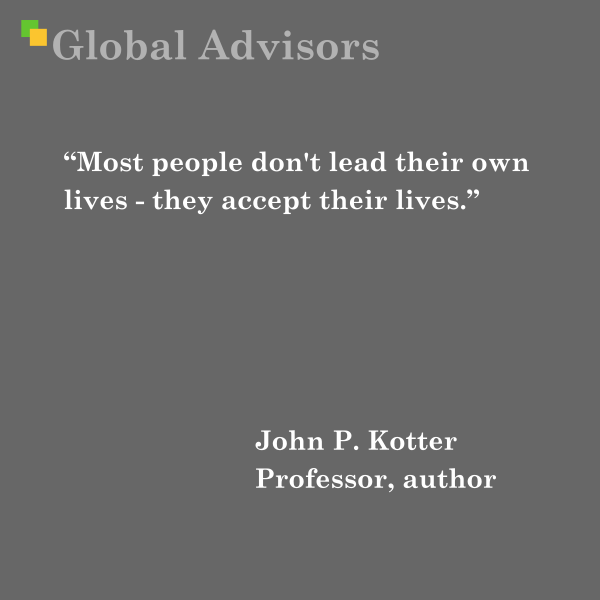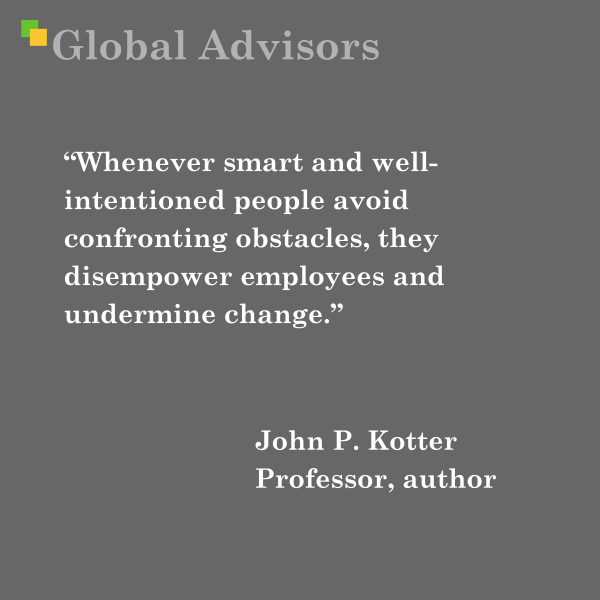| |
|
| |
| |
| |
|
A daily bite-size selection of top business content. |
| |
| |
| |
Quote: Richard Koch Author, investor, strategist“The 80/20 Principle asserts that a minority of causes, inputs, or effort usually lead to a majority of the results, outputs, or rewards.” - Richard Koch - Author, investor, strategistThe quote, “The 80/20 Principle asserts that a minority of causes, inputs, or effort usually lead to a majority of the results, outputs, or rewards,” originates from the acclaimed British author, entrepreneur, and strategist Richard Koch. This principle, also widely known as the Pareto Principle, suggests that in many aspects of business and life, a focused minority is responsible for producing the majority of results. In practical terms, Koch observed that 20% of activities typically lead to 80% of the value or outcomes—whether those are profits, happiness, or productivity. Koch’s sharp insight into this pattern did not emerge in isolation. He built his career in environments where optimizing results and leveraging limited resources was essential. After earning an M.A. from Oxford University and an M.B.A. from The Wharton School, Koch launched his professional journey with the Boston Consulting Group, before becoming a partner at Bain & Company. There, consulting for leading global organizations, he recognized that the most significant outcomes often stemmed from a narrow selection of strategic moves or high-leverage initiatives. Leaving Bain in 1983, Koch co-founded L.E.K. Consulting and became a serial investor and entrepreneur, with ownership in businesses such as Filofax, Plymouth Gin, Betfair, and FanDuel. Across these varied ventures, Koch repeatedly saw the 80/20 rule in action—whether identifying the most profitable customers, streamlining operations, or focusing on the few core products that drove sales. About Richard KochRichard Koch (born July 28, 1950) has become a globally recognized voice on strategy, entrepreneurship, and the science of effectiveness. Beyond his consulting work and private equity investments, Koch has authored several influential books, most notably The 80/20 Principle, which has sold over a million copies and been translated into 35 languages. His writing popularized the application of the Pareto Principle beyond economics, demonstrating its practical relevance for business, personal development, and lifestyle choices. Koch’s personal journey reflects the core lesson of his message: by identifying the vital few factors that matter most, and minimizing time on the trivial many, individuals and organizations can multiply their effectiveness and reward. He has credited his mastery of this principle as the key to amassing significant wealth and achieving a form of early retirement, allowing him the freedom to invest, write, and speak across the world. Today, Koch’s 80/20 Principle stands not just as a tool for efficiency but as a transformative lens for reimagining how we approach challenges, prioritize resources, and strive for lasting success.
|
| |
| |
Term: Corporate StrategyCorporate strategy, as outlined by Richard Koch, refers to the overarching plan and direction for a multi-business organization, focusing on where the firm should compete and what kinds of businesses it should own or enter. This type of strategy is concerned with the selection and management of a portfolio of business units, industries, or product-market segments, and the allocation of resources among them. Koch emphasizes that corporate strategy is about understanding and choosing the arenas in which a firm operates, especially in cases where multiple distinct business areas are involved. Related theorist: Richard Koch
Corporate strategy asks questions such as:
It focuses on creating value through synergies, developing core competencies shared across units, and ensuring that the whole organization delivers more value than the sum of its parts. Business Unit Strategy vs. Corporate Strategy (as per Koch)Koch stresses that, at the business unit level, strategy centers on achieving competitive advantage within a specific product-market segment or arena—by either being the lowest-cost producer or by offering a product that is markedly more attractive to customers than competitors’ offerings. In contrast, corporate strategy is about identifying and managing the “few arenas” (businesses) that generate the most value, and ensuring they work together to deliver superior results for the corporation as a whole.
In summary, corporate strategy is about the selection and management of a portfolio of businesses to create overall value, whereas business unit strategy is about achieving and sustaining competitive advantage in a chosen market or segment. Koch’s distinction makes it clear: corporate strategy sets the direction for the whole enterprise; business unit strategy wins the battle in each chosen arena.
|
| |
| |
Quote: John P. Kotter - Professor, author“A useful rule of thumb: Whenever you cannot describe the vision driving a change initiative in five minutes or less and get a reaction that signifies both understanding and interest, you are in for trouble.” - John P. Kotter - Professor, authorJohn P. Kotter’s observation—“A useful rule of thumb: Whenever you cannot describe the vision driving a change initiative in five minutes or less and get a reaction that signifies both understanding and interest, you are in for trouble.”—emerges from decades of rigorous research into the mechanics of organizational transformation and leadership. The quote distills a critical insight at the heart of Kotter’s renowned work on change management: successful change initiatives hinge on the clarity and communicability of their vision. Drawing upon his extensive study of over 100 organizations undergoing transformation, Kotter discovered that even the most technically sound change efforts falter when the vision behind them is vague, convoluted, or fails to energize those involved. This realization became a cornerstone of his influential framework, emphasizing that a vision must not only provide direction but must also be articulated succinctly—capturing both understanding and enthusiasm from stakeholders in minutes, not hours. The context for this rule of thumb is rooted in Kotter’s widely adopted “8-Step Process for Leading Change,” first introduced in his 1996 book, Leading Change. In this step-by-step model, the third and fourth steps—form a strategic vision and communicate the vision—underscore the necessity of crafting a compelling narrative for change and ensuring that it resonates organization-wide. Kotter’s research established that if people cannot quickly grasp and feel inspired by the vision, skepticism and resistance are likely to follow, undermining the entire transformation effort. About John P. KotterJohn P. Kotter is a distinguished professor, author, and pioneer in the field of organizational change. As a long-standing Harvard Business School professor, Kotter has spent his career analyzing what distinguishes successful transformation from failure. His groundbreaking 8-step change model, developed in the mid-1990s, remains one of the most influential frameworks in business strategy and leadership circles worldwide. Kotter’s work emphasizes that enduring change is as much about human dynamics and communication as it is about strategic planning. He is recognized for distilling complex organizational theories into actionable advice, with a particular focus on the importance of urgency, coalition-building, and the communicability of vision. Contextual InsightsKotter’s insight is especially relevant in today’s rapidly evolving business landscape, where organizations face constant social, technological, and economic pressures to adapt. His rule serves as both a warning and a guide: If leaders cannot convey the purpose and promise of change in a way that is easily understood and genuinely exciting, it is likely that confusion and inertia will hinder progress. This quote encapsulates the wisdom that visionary leadership demands not just an inspiring destination, but a message so clear that it can be shared, understood, and embraced across every level of an organization—swiftly and memorably.
|
| |
| |
Quote: John P. Kotter - Professor, author“Develop the Change Vision and Strategy. Clarify how the future will be different from the past, and how you can make that future a reality.” - John P. Kotter - Professor, authorThe quote “Develop the Change Vision and Strategy. Clarify how the future will be different from the past, and how you can make that future a reality.” by John P. Kotter encapsulates a critical principle in leading transformation within organizations. This insight is deeply rooted in Kotter's groundbreaking work on organizational change, particularly as articulated in his influential 8-Step Change Model. In the early 1990s, Kotter, a professor at Harvard Business School, conducted extensive research across more than 100 organizations undergoing major transitions. Through this research, he observed recurring patterns in both successful and failed transformation efforts. Kotter distilled these findings into his seminal 8-step process, outlined in his widely acclaimed book, Leading Change (1996). Central to this model is the necessity of crafting a clear and compelling change vision and a practical strategy to achieve it. According to Kotter, after establishing a sense of urgency and assembling a guiding coalition, leaders must articulate a vision that vividly contrasts the future state from the current reality. Equally important is clarifying the strategies that will turn this vision into concrete results. Without this clarity, organizations risk losing alignment and momentum, leaving change initiatives vulnerable to confusion and resistance from within. Kotter’s approach underscores that effective change cannot rely solely on top-down mandates or external pressures. Instead, it is about engaging people at every level, fostering understanding of the purpose behind the change, and painting a vivid picture of the benefits and pathway forward. This vision-driven strategy not only unifies teams but also motivates sustained action, making large-scale transformation achievable even in complex and turbulent environments. About John P. KotterJohn P. Kotter is recognized globally as one of the foremost authorities on leadership and change. A long-standing professor at Harvard Business School, he has authored several best-selling books, including Leading Change, which has become a foundational text in the field of change management. Kotter’s contributions are not confined to theory—his research has influenced leaders and organizations worldwide, guiding the implementation of sustainable change. Through his 8-Step Change Model, Kotter reshaped how businesses approach transformation, emphasizing the human side of change as much as the procedural and structural aspects. His model is celebrated for its practical application, clear structure, and lasting impact, making it a go-to framework for organizations navigating moments of critical transition. In the face of rapid technological, social, and economic shifts, Kotter’s enduring message is that visionary leadership and a well-communicated strategy are indispensable for organizations striving not just to adapt but to thrive.
|
| |
| |
Term: VisionA corporate vision is a statement describing the desired future state of an organization. It articulates where the company aspires to be in the long term, usually over a period of 3 to 10 years, in terms of impact, scale, and key achievements. The vision provides a forward-looking, ambitious goal that inspires and aligns stakeholders, guiding both strategic planning and resource allocation. Related Theorist Gary Hamel
Gary Hamel is widely recognized as the leading strategy theorist associated with the concept of corporate vision. Alongside C.K. Prahalad, Hamel introduced the importance of “strategic intent”—a precursor to modern corporate vision—emphasizing how a compelling future ambition can energize organizations and guide long-term strategy. Their work underscores the idea that a clear, aspirational vision is not just inspirational, but central to driving long-term competitive advantage and organizational alignment.
Key characteristics of an effective corporate vision:
For example, Microsoft’s vision statement is, "to empower every person and every organization on the planet to achieve more." This statement is forward-looking and reflects the company’s broad ambition and values. Vision vs. Mission vs. PurposeKey Contrasts:
Summary:
|
| |
| |
Quote: John P. Kotter - Professor, author“This iceberg is not who we are. It is only where we now live.” - John P. Kotter - Professor, authorThis quote originates from John P. Kotter’s influential fable, Our Iceberg Is Melting: Changing and Succeeding Under Any Conditions, co-authored with Holger Rathgeber. Set in the frozen expanse of Antarctica, the story follows a colony of penguins confronted with a daunting realization: their iceberg home is melting. As they struggle to face this existential threat, the colony must overcome resistance to change, tackle denial, and forge a path forward together. The line, “This iceberg is not who we are. It is only where we now live,” encapsulates a pivotal theme of the book. Spoken during a dramatic meeting among the penguins, the message is clear: identity is not tied to current circumstances. The iceberg symbolizes comfort zones, established routines, or the familiar structures organizations or individuals cling to, especially when confronted by uncertainty or crises. Kotter’s insight is that circumstances—however urgent or threatening—do not define one’s core values, purpose, or collective identity. By distinguishing between “who we are” and “where we live,” Kotter urges audiences to separate the essence of their identity from temporary conditions, laying the groundwork for adaptability and resilience in the face of necessary change. Our Iceberg Is Melting itself is a parable designed to distill and illustrate Kotter’s renowned Eight Step Process for Leading Change. Through the narrative of the penguins, Kotter conveys how successful adaptation—whether in organizations or communities—relies on assembling the courage to accept uncomfortable truths, mobilize around a shared vision, and act collectively, rather than retreating into denial or nostalgia. About John P. KotterJohn P. Kotter is a preeminent authority on leadership and change management. As a professor at Harvard Business School, Kotter has spent decades researching how leaders successfully navigate major transformations within organizations. He is the author of numerous award-winning books, including Leading Change, which introduced his influential Eight Step Process, and Our Iceberg Is Melting, which brings those concepts to life in a memorable, accessible way. Kotter’s work has shaped the practice of organizational change around the world. His emphasis on the need for urgency, clear vision, inclusive leadership teams, and systematic action provides a roadmap for leaders seeking to inspire adaptability and resilience in times of disruption. By blending rigorous research with the engaging storytelling found in Our Iceberg Is Melting, Kotter has helped countless leaders and teams confront challenges, recognizing that—no matter the “iceberg” they inhabit—their identity and potential transcend present circumstances
|
| |
| |
Term: Strategic Fit"Strategic Fit" refers to the alignment between an organization's internal capabilities (resources, structure, and processes) and the external environment (market demands, competition, and industry trends). Achieving strategic fit ensures that a company can effectively execute its strategy by leveraging its strengths to capitalize on opportunities and mitigate threats. Related Theorist: Henry Mintzberg The concept of “Strategic Fit” sits at the heart of effective business strategy, yet its significance has deep roots in the evolving landscape of management thought. In the mid-20th century, as organizations grew more complex and global, leaders recognized that simply having a strategy was not enough—what mattered was how well a company’s internal strengths aligned with external market realities. As strategic management matured, early approaches favored rigorous planning and analysis, treating strategy as a linear exercise: survey the environment, select your objectives, and systematically deploy resources. However, as thinkers like Henry Mintzberg observed, such structured approaches often fell short when faced with the unpredictable and dynamic nature of real-world markets. Mintzberg, known for his influential work on strategy and organizational design, challenged the prevailing orthodoxy. He argued that successful strategies do not emerge from rigid plans but rather from a synthesis of deliberate intent and emergent, adaptive learning. In his view, “Strategic Fit” is not a static achievement but a continuous process of aligning an organization’s resources, structures, and processes with changing market demands, competitive pressures, and broader industry trends. Mintzberg’s research into organizational forms—ranging from the entrepreneurial “personal enterprise” to the decentralized “project organization”—demonstrated that there is no one-size-fits-all structure. Instead, organizations must adapt, blending vision with learning and analysis with intuition, always seeking a fit between what they do well and what the world requires. His famous “5 Ps of Strategy” and work on emergent strategy highlight the creative, often non-linear interplay between an organization’s internal realities and its external environment. Today, “Strategic Fit” remains a guiding principle for organizations navigating complexity. Its roots in Mintzberg’s work remind us that true strategic advantage lies not just in having a plan, but in mastering the ongoing, dynamic alignment between inside capabilities and outside demands. By continuously seeking strategic fit, organizations maintain their relevance, resilience, and capacity for sustained success across ever-shifting global landscapes
|
| |
| |
Quote: John P. Kotter - Professor, author“Most people don't lead their own lives - they accept their lives.” - John P. Kotter, Leading ChangeJohn P. Kotter, a renowned professor at Harvard Business School and a leading authority on leadership and change, introduced this quote in his influential book, Leading Change. The book, first published in 1996, has become a cornerstone for understanding how individuals and organizations navigate transformation. Kotter’s work is grounded in decades of research into why change efforts often fail and what distinguishes successful leaders from those who merely manage. This particular quote captures a central theme in Kotter’s philosophy: the distinction between passively accepting circumstances and actively shaping one’s destiny. Through his research, Kotter observed that many people—whether in their personal lives or within organizations—tend to fall into routines, responding to external pressures and expectations rather than proactively setting their own direction. This tendency is not just a matter of comfort; it is often reinforced by organizational structures, cultural norms, and a lack of urgency or vision. Kotter’s eight-step process for leading change begins with the need to create a sense of urgency—a deliberate push to break through complacency and inspire action. He argues that true leadership is about envisioning a better future, mobilizing people toward that vision, and empowering them to act, rather than simply maintaining the status quo. In the context of this quote, Kotter is challenging individuals and leaders alike to reflect: Are you steering your life and work with intention, or are you simply drifting along with the current? Why This Matters: In Summary:
|
| |
| | |||||||||||||||||||||
Term: Price ElasticityPrice elasticity measures how sensitive customer demand is to changes in price. By understanding whether demand for a product is elastic (highly responsive to price changes) or inelastic (less responsive), businesses can optimize pricing to maximize revenue, profit and market share. Effective use of price elasticity enables data-driven pricing decisions, supports dynamic and value-based pricing models, and helps forecast the impact of price adjustments on sales and profitability. Comprehensive Outline of Pricing Elasticity in Pricing Strategy1. Definition and Core Concept
2. Importance in Pricing Strategy
3. Factors Influencing Price Elasticity
4. Pricing Strategies Based on Elasticity
5. Practical Applications
6. Measurement and Data Requirements
7. Strategic Implications
Summary:
|
|||||||||||||||||||||
| |
| |
Quote: John P. Kotter - Professor, author“Whenever smart and well-intentioned people avoid confronting obstacles, they disempower employees and undermine change.” - John P. Kotter, Leading ChangeJohn P. Kotter, a renowned authority on leadership and change management, wrote Leading Change after decades of observing why organizational transformations succeed or fail. This particular quote distills a core lesson from his research: the greatest threats to progress are not always external crises or a lack of intelligence, but the reluctance of capable leaders to face uncomfortable truths and challenges head-on. Context and Meaning Kotter’s work emerged from the realization that many organizations, despite being filled with talented and well-meaning leaders, routinely stumble when trying to implement change. He noticed that these leaders often sidestep difficult conversations, ignore persistent roadblocks, or hope that problems will resolve themselves. This avoidance, while sometimes motivated by a desire to maintain harmony or avoid conflict, actually produces the opposite effect: it erodes trust, saps morale, and stifles initiative at all levels of the organization. When leaders fail to confront obstacles—be they resistant managers, outdated processes, or cultural inertia—they send a message to employees that challenges are insurmountable or not worth addressing. Employees, seeing this, become disengaged and powerless, feeling that their efforts to drive change will not be supported or rewarded. Over time, this breeds cynicism and apathy, making meaningful transformation nearly impossible. Why This Insight Matters Kotter’s insight is rooted in his broader framework for successful change, which emphasizes urgency, open communication, and the removal of barriers. He argues that leadership is not just about setting a vision, but about actively clearing the path for others to act on that vision. When obstacles are ignored, they become institutionalized, turning into sources of frustration and resistance that can derail even the most promising initiatives. The quote serves as both a warning and a call to action. It urges leaders to model the courage and transparency they wish to see in their organizations. By confronting challenges directly, leaders empower employees to do the same, creating a culture where change is possible and everyone feels responsible for progress. The Broader Legacy Kotter’s message resonates beyond the boardroom. It applies to any context where people are working together to achieve something new—whether in business, government, or community organizations. The lesson is clear: progress depends not just on intelligence or good intentions, but on the willingness to face difficulties openly and to empower others to help overcome them. In summary, this quote encapsulates a hard-won truth from the front lines of organizational change: avoiding obstacles doesn’t protect people or projects—it undermines them. True leadership means confronting challenges, empowering teams, and clearing the way for real, lasting transformation.
|
| |
| |
|
| |
| |


